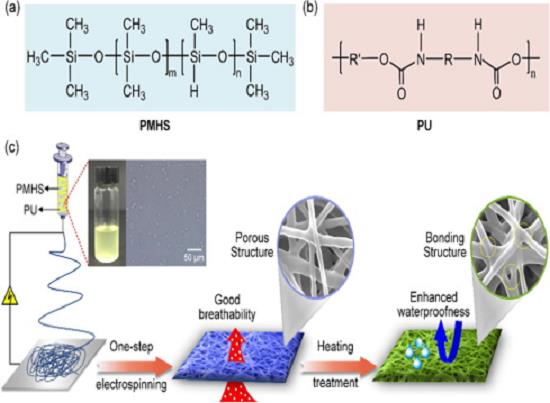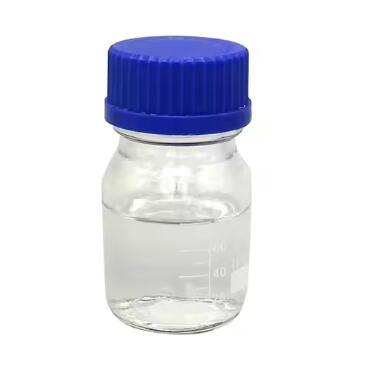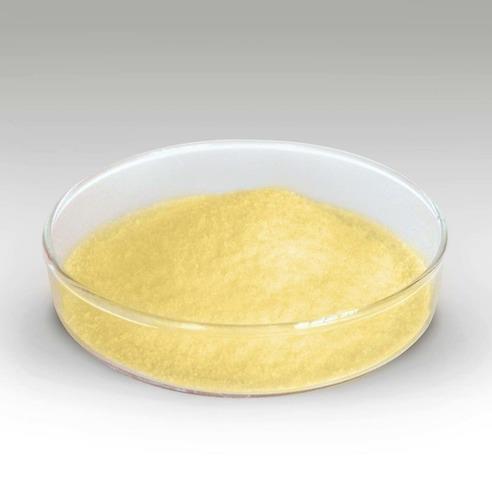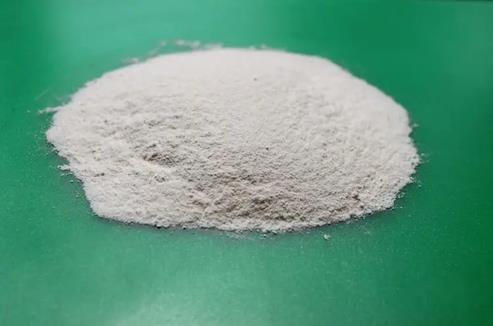Exploring the versatile applications of poly(methylhydrosiloxane) in material engineering
General Description
Poly(methylhydrosiloxane) is a versatile material that has numerous applications in the field of material engineering. Its unique properties make it an effective precursor for the synthesis of SiOC matrices used in Li-ion batteries, which provide high Li-ion storage capacity and suppress the formation of an unstable solid-electrolyte interface. Additionally, poly(methylhydrosiloxane) can be used to create polymer nanofilms for high-throughput screening of transdermal therapeutic systems. It is also used in the electrospinning process for producing breathable waterproof membranes as a promising alternative to current fluorinated materials. Furthermore, poly(methylhydrosiloxane) serves as a delivery vehicle for cyclic imide N-halamine, offering a highly antimicrobial treatment for cellulose without the use of harmful solvents or chemical bonding. Overall, poly(methylhydrosiloxane) shows great potential in various fields of material engineering.
Figure 1. Schematic illustration of poly(methylhydrosiloxane)/polyurethane waterproof membranes.
Applications of Poly(methylhydrosiloxane) in material engineering
Li-ion batteries
Poly(methylhydrosiloxane) is used as a precursor in the synthesis of a SiOC matrix which acts as an effective host for nanoscale anode materials alloying with Li in Li-ion batteries. It provides a high Li-ion storage capacity, buffers volumetric changes upon lithiation, and suppresses the formation of an unstable solid-electrolyte interface. In this study, homogeneously embedded Sb nanoparticles with a size of 5-40nm were synthesized in a SiOC matrix using a preceramic polymer obtained through the Pt-catalyzed gelation reaction of Sb 2-ethylhexanoate and a poly(methylhydrosiloxane) mixture functionalized with apolar divinyl benzene side-chains. Anodes composed of SiOC/Sb show a high rate capability and deliver charge storage capacity in the range of 703-549mAh/g at a current density of 74.4-2232mA/g. The impact of Sb on the Si-O-C bonding and free carbon content of the SiOC matrix and its concomitant influence on Li-ion storage capacity of SiOC were assessed by Raman and solid-state NMR spectroscopy. 1
Transdermal therapeutic system
Poly(methylhydrosiloxane) was used to create a polymer nanofilm (PNF) with poly(L-lactic acid) (PLLA) for high-throughput screening of transdermal therapeutic systems. The PLLA/PMHS (1/1) PNF showed significantly shorter lag time than the Strat-M® membrane for 10 of the drugs tested, with the formation of a highly diffusible PMHS-rich phase and sea-island structure suggested as contributing factors. Additionally, there was a high correlation observed between the measured value for the logarithm of the apparent permeability coefficient of PLLA/PMHS (1/1) PNF and the literature values for the apparent permeability coefficient of human skin. These results suggest that PLLA/PMHS (1/1) PNF may be an effective tool for predicting drug permeability in human skin and may have potential applications in high-throughput screening for developing transdermal therapeutic systems. 2
Breathable waterproof membranes
Poly(methylhydrosiloxane), when incorporated into polyurethane fibers via electrospinning and thermal treatment, imparts powerful hydrophobicity to the resulting fibrous membranes. These membranes exhibit robust waterproofness, medium breathability, and excellent tensile strength, making them suitable for general use. This approach offers a promising alternative to current high-performing breathable waterproof membranes that often employ fluorinated materials with potential environmental hazards, as non-fluorinated chemicals can be easily integrated into fibers through a facile one-step electrospinning process. Overall, poly(methylhydrosiloxane) is an effective tool for achieving durable hydrophobic membranes with significant potential for environmental protection. 3
Biocidal coating
Poly(methylhydrosiloxane) is used as a delivery vehicle for cyclic imide N-halamine, which provides a highly antimicrobial treatment for cellulose without the use of harmful solvents or chemical bonding. The polysiloxane modifier is interpenetrated into cellulose in supercritical CO2 to create a modification layer that positively correlates with interpenetration pressure and is tunable to control loading of the imide N-H bond. Chlorination of the imide N-H bonds on cellulose creates N-Cl counterparts, which exhibit powerful biocidability and reduce bacteria counts by ~7 log in 20 minutes. The stability and rechargeability of the treatment are very promising due to the satisfactory chemical structure and firm interlocking of the polysiloxane modifier with cellulose via scCO2. 4
Reference
1. Dubey RJ, Sasikumar PVW, Cerboni N, Aebli M, Krumeich F, Blugan G, Kravchyk KV, Graule T, Kovalenko MV. Silicon oxycarbide-antimony nanocomposites for high-performance Li-ion battery anodes. Nanoscale, 2020, 2(25):13540-13547.
2. Suzuki T, Sato K, Seki T, Seki T. Study of Polymer Nanofilms Using for High-Throughput Screening in the Development of Transdermal Therapeutic System. Chem Pharm Bull (Tokyo), 2022, 70(12):868-875.
3. Zhu W, Zhao J, Wang X, Liu X, Yu J, Ding B. Facile fabrication of fluorine-free breathable poly(methylhydrosiloxane)/polyurethane fibrous membranes with enhanced water-resistant capability. J Colloid Interface Sci, 2019, 556:541-548.
4. Li L, Xin Y, Wu F, Lyu X, Yao Q, Yin X, Zhang Q, Shan W, Chen Y, Han Q. A Polysiloxane Delivery Vehicle of Cyclic N-Halamine for Biocidal Coating of Cellulose in Supercritical CO2. Polymers (Basel), 2022, 14(23):5080.
Related articles And Qustion
Lastest Price from Poly(methylhydrosiloxane) manufacturers
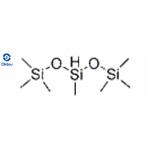
US $0.00-0.00/KG2025-11-27
- CAS:
- 63148-57-2
- Min. Order:
- 1KG
- Purity:
- 98
- Supply Ability:
- 10000KGS

US $0.00/KG2025-06-12
- CAS:
- 63148-57-2
- Min. Order:
- 1KG
- Purity:
- 15-35cs
- Supply Ability:
- 200mt per month
